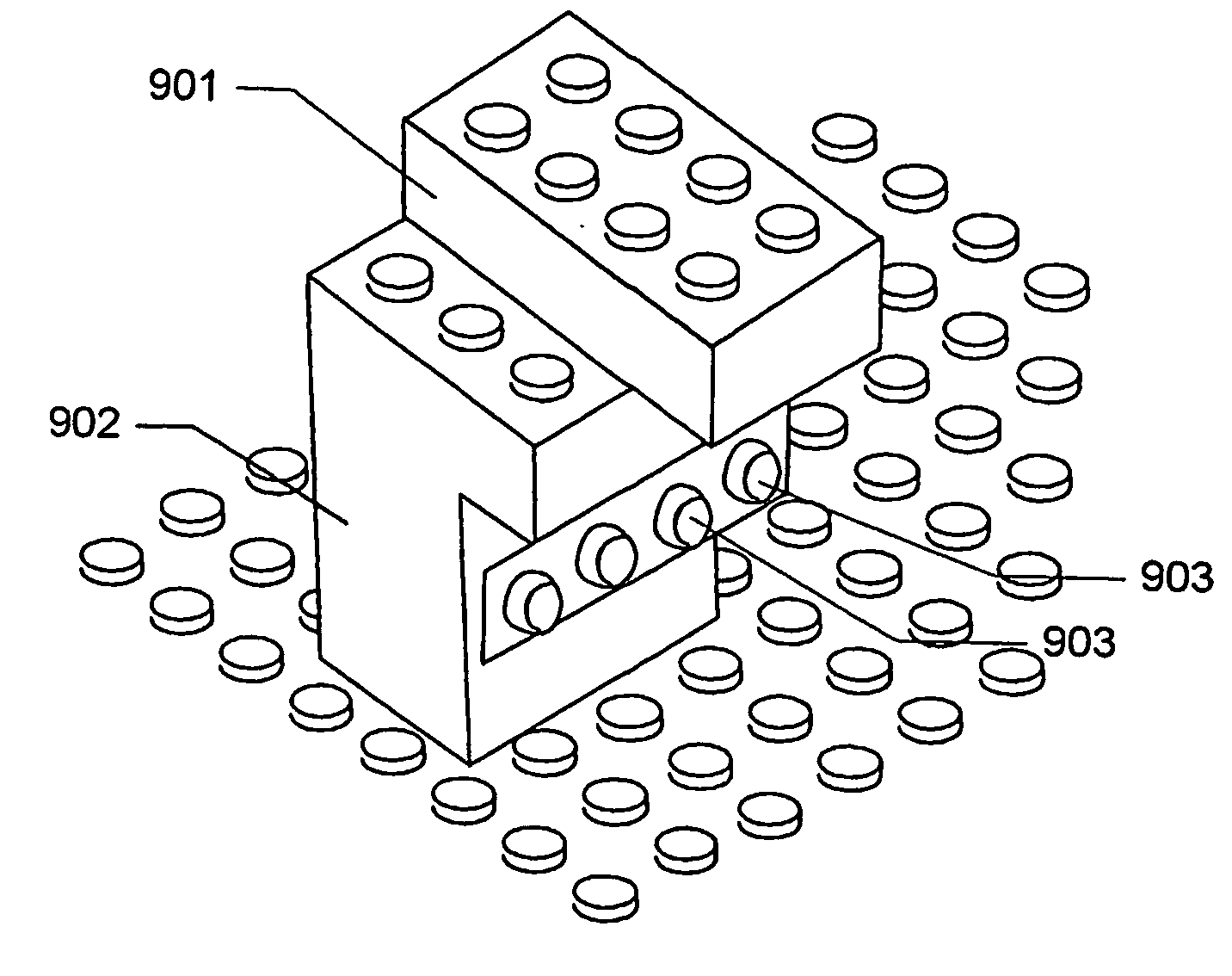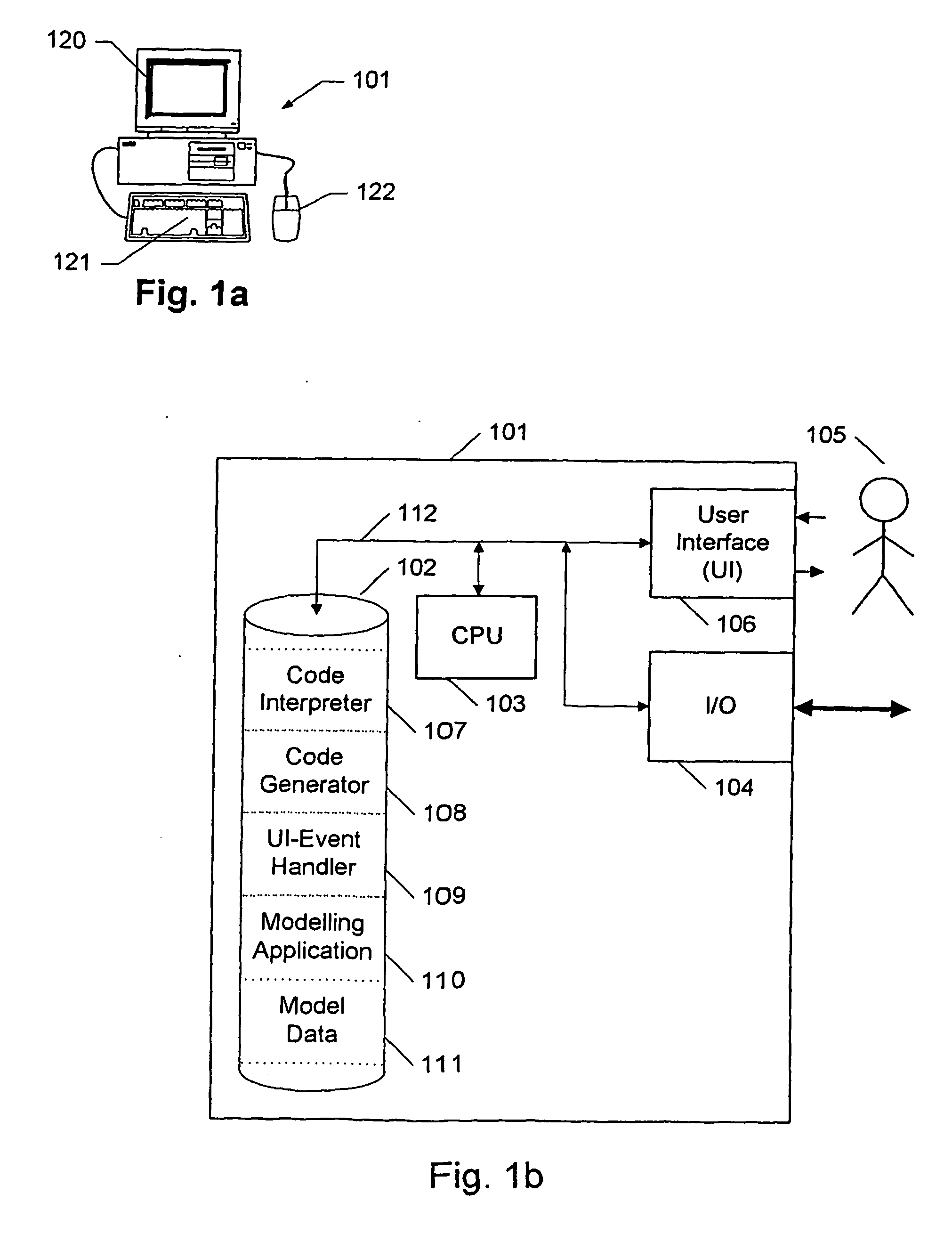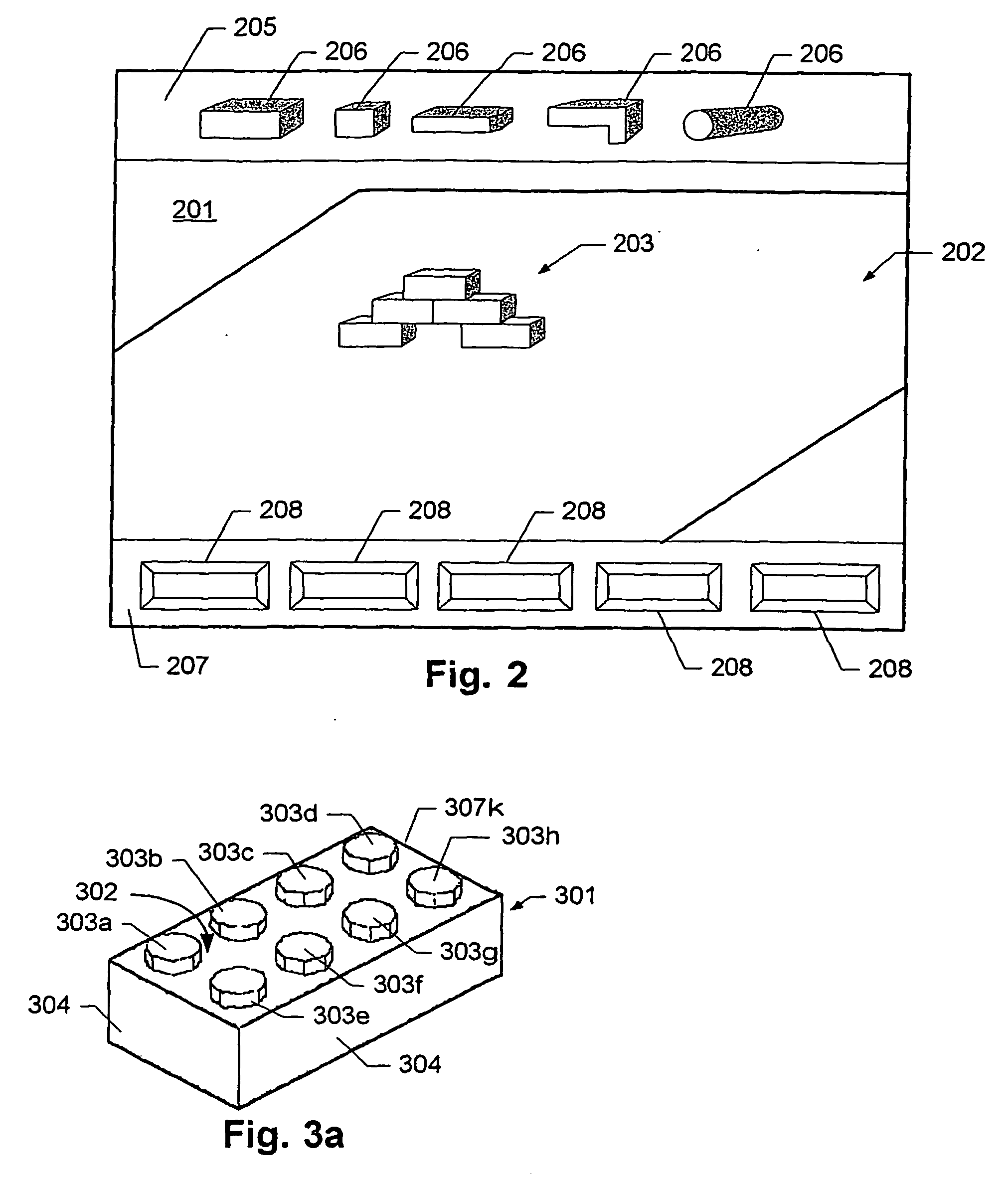Method and system for manipulating a digital representation of a three-dimensional object
a three-dimensional object and digital representation technology, applied in the field of methods and systems for manipulating a digital representation of a three-dimensional object, can solve the problems of not being widely used in tools, the simple task of painting an object in the real world may easily take several hours, and the restrictions of construction games where virtual building blocks are positioned
- Summary
- Abstract
- Description
- Claims
- Application Information
AI Technical Summary
Benefits of technology
Problems solved by technology
Method used
Image
Examples
Embodiment Construction
[0054]FIGS. 1a-b show a data processing system for generating and manipulating computer-readable models of geometrical objects.
[0055]Fig. 1a shows a schematic view of an example of a computer system. The computer system comprises a suitably programmed computer 101, e.g. a personal computer, comprising a display 120, a keyboard 121 and a computer mouse 122 and / or another pointing device, such as a touch pad, a track ball, a light pen, a touch screen, or the like.
[0056] The computer system designated 101 is adapted to facilitate designing, storing, manipulating, and sharing of virtual building block models. The computer system 101 can be used as a stand-alone system or as a client in a client / server system.
[0057]Fig. 1b shows a block diagram of a data processing system for generating and manipulating computer-readable virtual building block models. The computer 101 comprises memory 102 which may partly be implemented as a volatile and partly as a non-volatile memory means, e.g. a r...
PUM
 Login to View More
Login to View More Abstract
Description
Claims
Application Information
 Login to View More
Login to View More - R&D
- Intellectual Property
- Life Sciences
- Materials
- Tech Scout
- Unparalleled Data Quality
- Higher Quality Content
- 60% Fewer Hallucinations
Browse by: Latest US Patents, China's latest patents, Technical Efficacy Thesaurus, Application Domain, Technology Topic, Popular Technical Reports.
© 2025 PatSnap. All rights reserved.Legal|Privacy policy|Modern Slavery Act Transparency Statement|Sitemap|About US| Contact US: help@patsnap.com



